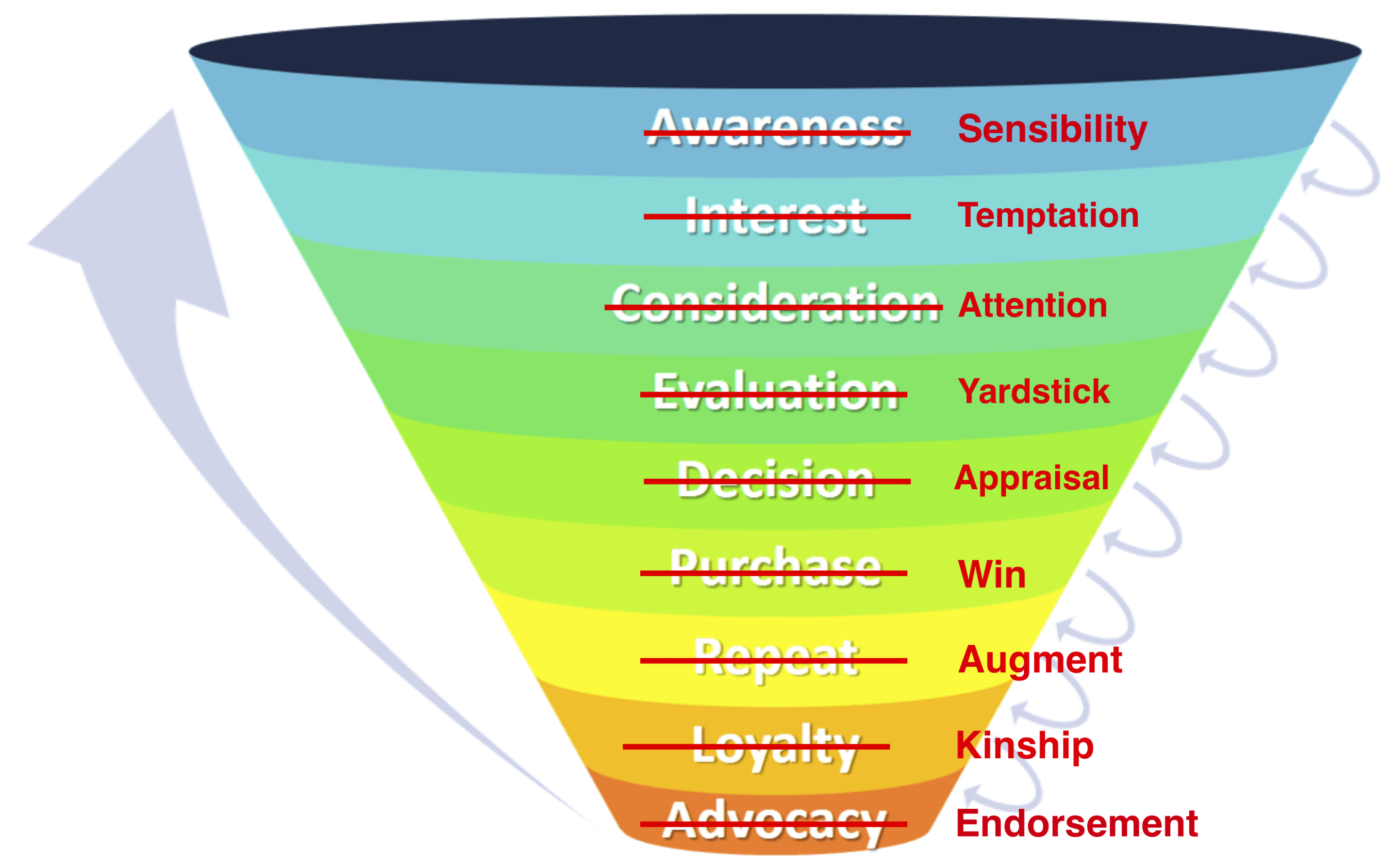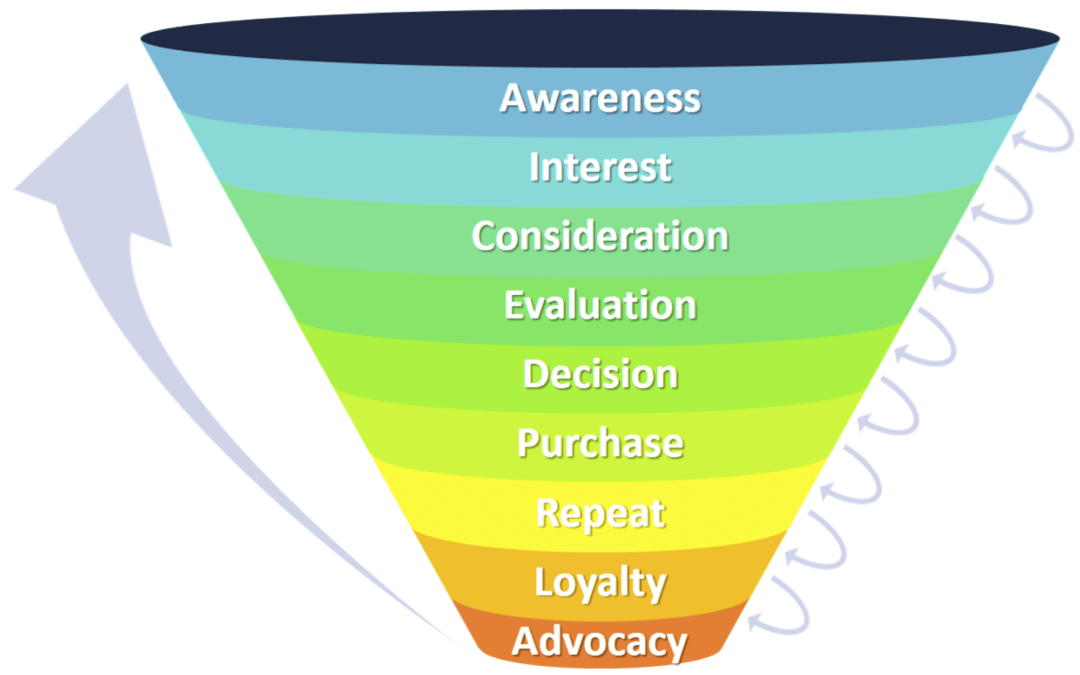The marketing funnel (alternatively known as the purchase funnel, the purchasing funnel, the customer funnel, the sales funnel, the conversion funnel, or the snake oil funnel) is a model that purports to show the various stages of the journey ostensibly taken by a hypothetical (alternatively known as theoretical, semi-fictional, or utterly fabricated) prospect (alternatively known as a persona or an utter fabrication) from the first interaction with your brand, product, or service to the deposit of his cash in your bank account.
As initially conceived by E. St. Elmo Lewis in 1898, the marketing funnel was a fundamentally simple construct. Comprising just five stages, it represented the evolving psyche of the prospect as he traversed the various states of mindfulness, judgment, contemplation, and appeal, culminating in a buying transaction. Simple. (See the figure below.)
That Was Then
With the deluge of academics, marketing consultants, hucksters, hooligans, charlatans, grifters, marketing-automation software developers, and everyone else who profits by complicating the simple into the field, however, the marketing funnel became increasing complex, reaching the point of obtuseness unto absurdity and self-defeat. (See the figure below.)
Considering the fact that such byzantine, labyrinthine, and CYA-ensuring convolution is altogether unnecessary, except, of course, in bureaucracies large enough to require a process by which to justify the existences of everyone involved in it — or to justify the cost of marketing-automation software — the real problem is that it doesn’t have an acronym. And how in the world can any concept in the milieu of contemporary business become popular enough to earn elevation to the exalted status of buzzword — and to achieve rarefaction by being used and abused unto meaninglessness — if it isn’t reducible to an acronym? Please. Let’s be real.
I Got This
Don’t worry. I worked from the middle-of-the-road rendering of the marketing funnel depicted at the top of this post and came up with the following stages for the funnel:
- Sensibility: This is the point at which you say the name of your brand, your product, or your service, and the prospect doesn’t say, “Huh?”
- Temptation: If you don’t hang up after the prospect’s exclamation of unfamiliarity, the prospect may be enticed to hear more.
- Attention: If the prospect is, indeed, enticed to hear more, chances are you have his heedfulness, if not his curiosity.
- Yardstick: This is the point at which you take the prospect’s temperature, gauging the extent to which he’s rising to the bait.
- Appraisal: Having swum to the surface, the prospect is now at the point of determining to strike … or to wait for the next fly.
- Win: BANG! You hooked him, reeled him in, and have him flopping breathlessly on the riverbank.
- Augment: Now that you got him, you can either throw him back in and try to catch him again (up-sell and cross-sell), or you can toss him in the creel and cast for another.
- Kinship: The customer version of the Stockholm syndrome, this is the point at which the fish you’ve caught develop a perverse allegiance to you and can’t wait to get hooked again.
- Endorsement: As an example of Kinship’s perversity, the fish you’ve caught will serve as bait in your efforts to snag larger fish.

Ask and Ye Shall Receive
If you’ve cheated and done the alphabetical math, you’ve already deduced the new acronym is STAY AWAKE.
“But wait!” I hear you cry. “It can’t be that simple.”
Au contraire.
The fact that we can be intelligent enough to complicate doesn’t guarantee we can be intelligent enough to simplify. But at the very least we can be awake enough to separate suspects from prospects, to pay meaningful attention to those prospects, to understand what they need and when they’re ready to buy it, to give them a fair price and a conscientious, ongoing relationship, and to be wary of, impatient with, and disgusted by those who would try to pull the wool of complication over our eyes.
We can learn everything we need to know about our prospects from talking with them. And we can pour all that lucidity, attentiveness, and common sense into ourselves without a funnel.
Everything can be as complicated as we want it to be — or as simple as we demand it to be.
STAY AWAKE.



